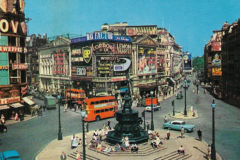China clay classics
Posted by Chris Graham on 7th August 2020
Here’s another evocative collection of photographs taken of China clay classics – lorries at Par and other Cornish ports, from David Vaughan.
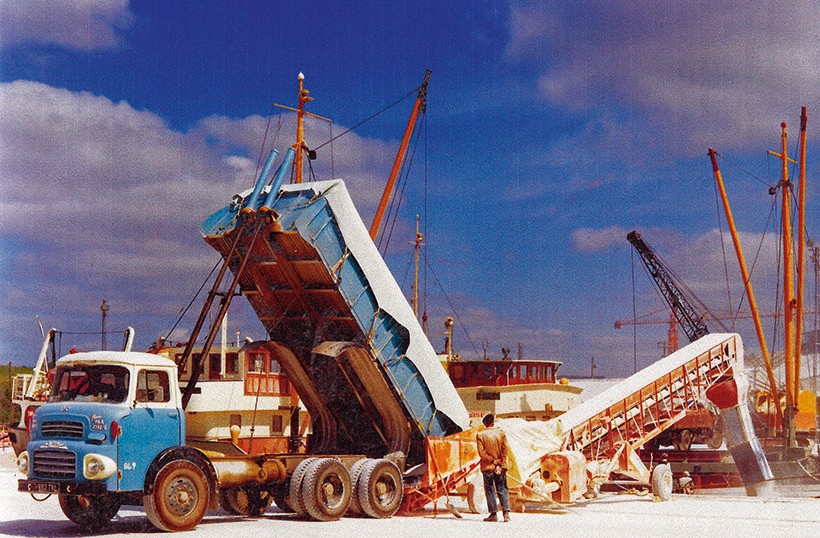
China clay classics: An Albion Reiver six-wheeled tipper, 982 TRL (Cornwall, 1963), seen unloading clay on to a Johnston portable conveyor at Par docks.
David Vaughan first visited the Cornish China clay-exporting ports during the 1960s, and we recently published some of his fascinating, period photographs taken at the working ports of Par, Charlestown and Fowey. So, here’s a further selection of images, this time featuring vehicles from the Heavy Haulage Company Limited, which was founded in 1919 to haul clay, coal and cement. This operator was the main provider of lorries for the clay industry in Cornwall, and was taken over by ECC in 1948, together with other, local transport companies.
David has included a photo of a comparatively modern Mercedes truck, to illustrate the changes that have taken place although, since this was taken in 2012, what used to be an 800-strong fleet of lorries at one time, has all gone. Today, clay haulage is in the hands of local, sub-contractors.
Speaking to his friend and ex-public relations manager for ECC, Ivor Bowditch (who helped with this series of articles), David was told that, during the 1960s, when the all-British fleet of its subsidiaries, Heavy Haulage and Western Express was getting a bit long in the tooth, it started having supply problems with the British Leyland Group. The fleet manager contacted the Leyland sales people with the news that ECC was considering buying Mercedes or MAN vehicles in the future but, instead of being reassured of good aftersales service for future Leyland Group purchases, the response was much less helpful. The Leyland Group representative simply laughed at the idea, commenting that: “If you do buy elsewhere, you’ll soon come running back to us.” This was so typical of the sort of attitude which lost British industry its market during that period.
Meanwhile, let’s look back with some interesting shots of some classic china clay tippers, with the promise of more to follow in the future…
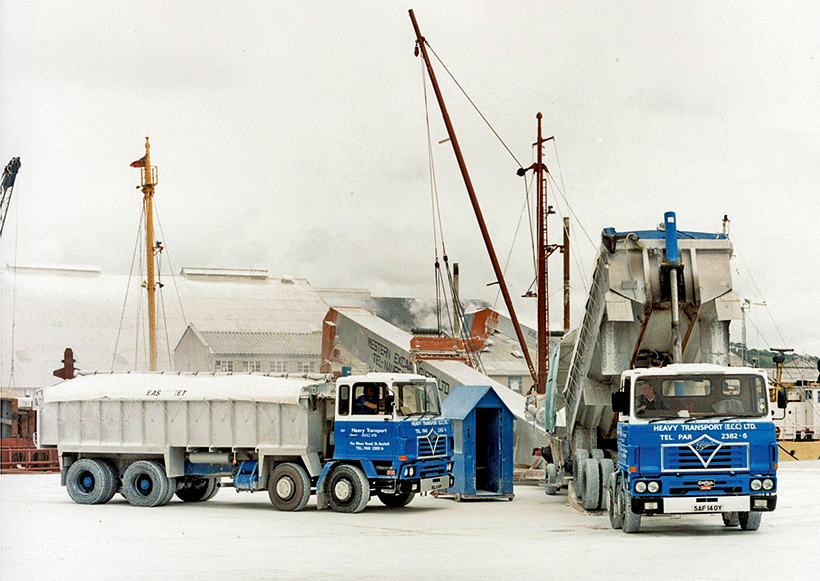
Two, Gardner-powered Foden S108 eight-wheeled tippers, including SAF 140Y (Cornwall, 1983), discharging via conveyors. By this time, conveyor loading for bulk clay was standard practise at both Par and Fowey.
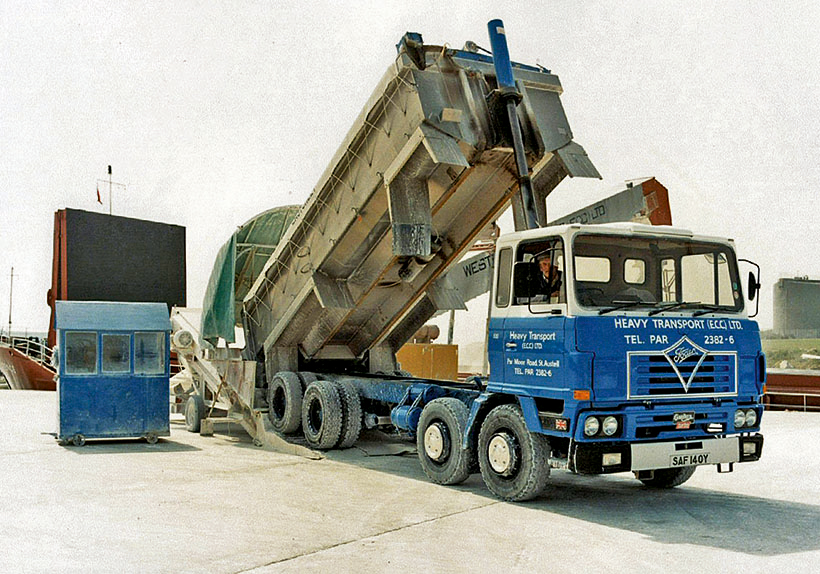
Another view of Foden S108 Haulmaster tipper, SAF 140Y, discharging its load at Par. Of note is that the Heavy Haulage fleet livery had now given way to a darker blue, and also note the Union Jack logo proudly displayed on the wheel arch panel of the Foden, denoting a true British product!
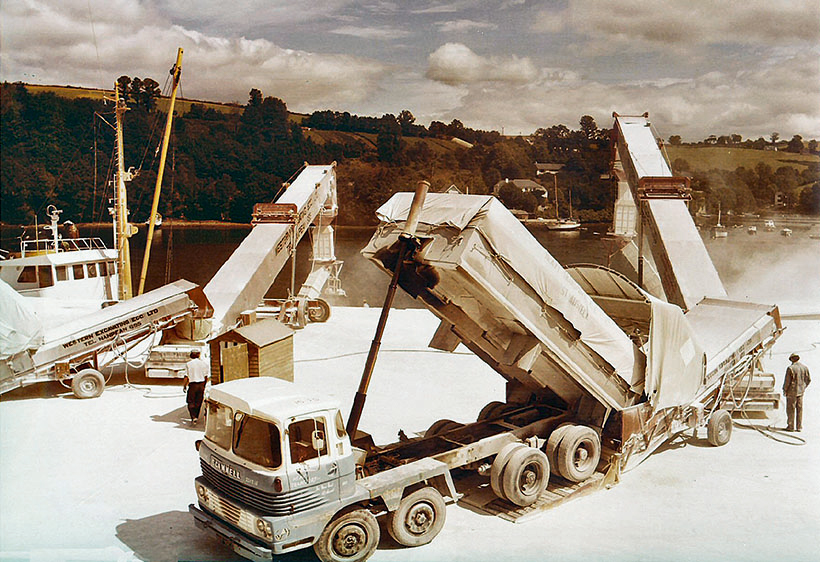
In August 1977, this Scammell Routeman eight-wheeled tipper was unloading at Fowey. The dry clay was very dusty in the summer, and could become a slippery slurry on the ground if it rained. To cut down on either, dust-sheets were used as much as possible on loads and elevators.
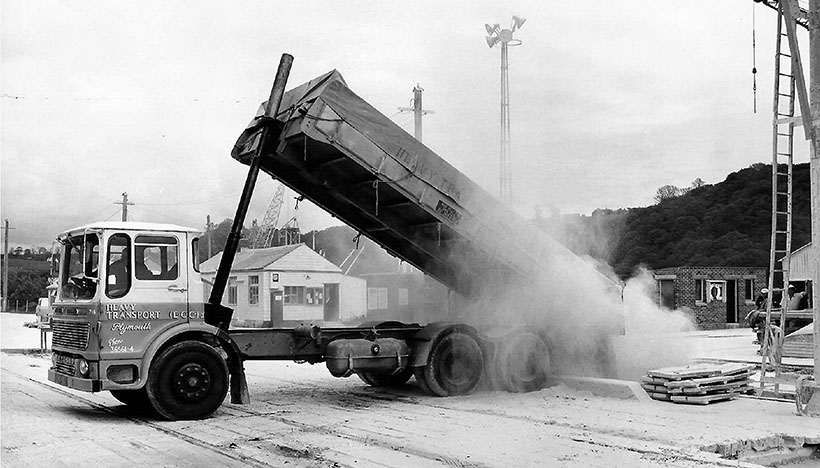
Talking of dust, this Ergo-cabbed Leyland six-wheeled tipper was discharging, at Fowey Jetty No 3, in June 1972, into a ground-based hopper. The load was then taken up a conveyor to the ship. Because Fowey had deep-water berths for larger vessels, the deck height was higher than that of the smaller coasters at Par.
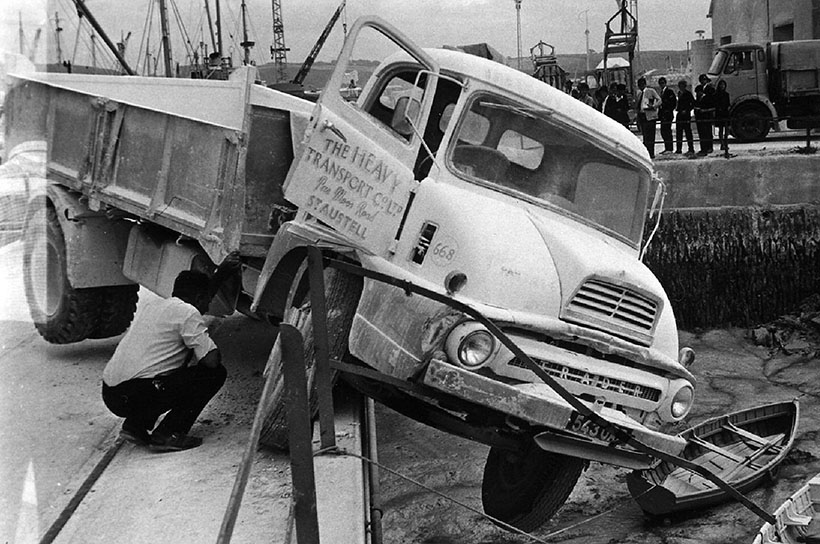
Whoops! This Heavy Transport Co Thames Trader, dating from 1964, has somehow skidded over the edge of the dock at Par. Was the driver surveying the situation, or hiding from the onlookers on the opposite bank?
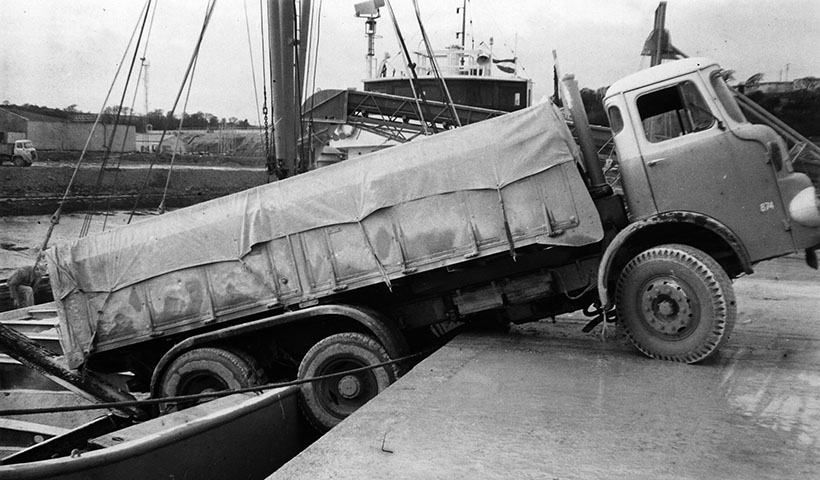
Whoops again! This LAD-cabbed Leyland or Albion six-wheeled tipper has also slipped over the edge, while backing to discharge its loads – or was it perhaps trying to board the ship?
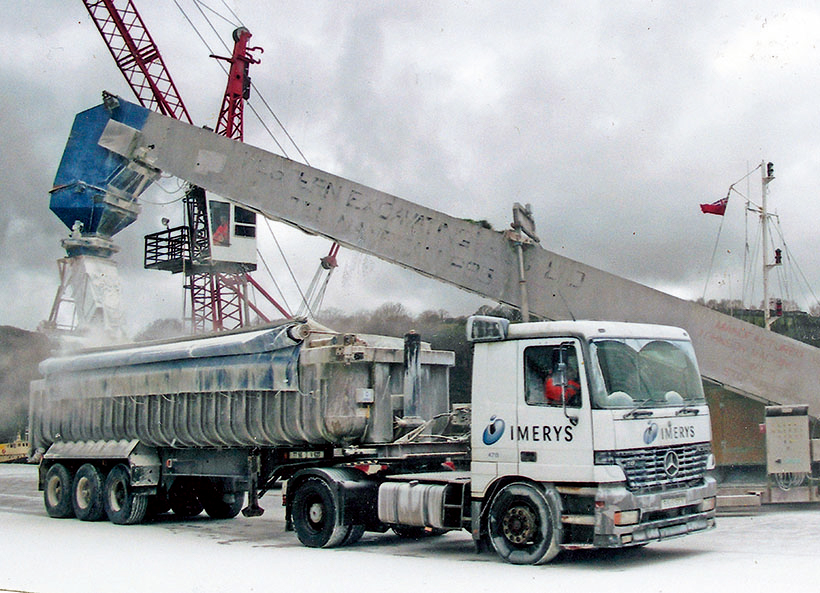
This photograph was taken by me in February, 2012, and shows the changes taking place in the industry. The company was, by now, part of the international China clay group, Imerys Minerals. The lorry was a Mercedes, but the major change was the cargo, imported clay from Brazil used to blend with Cornish clay for some specialist uses. This was also near the end of the in-house lorry fleet, as the following year it was closed down, the operations going over to private, sub-contracted hauliers.
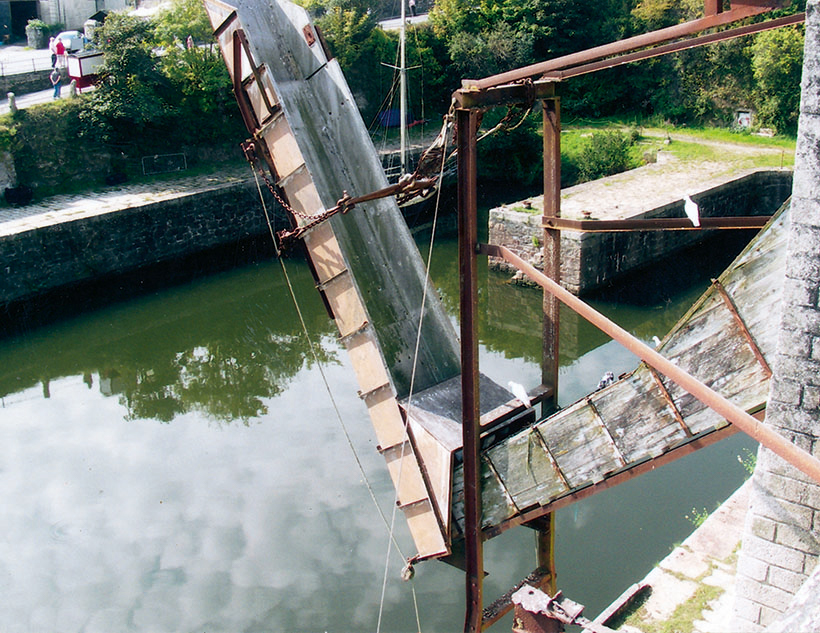
This view of the loading chutes at Charlestown harbour was taken by me on a visit in August, 2011. These chutes were used by road transport to load clay directly into ships. They were in use from the 1920s until at least the 1950s, mainly by the few remaining, independent clay producers.

A Cummins-powered Aktinson Silver Knight in the Western Express fleet, RAF 527G (Cornwall, 1968), with a bulk powder tank trailer, stands outside the bulk storage shed at Par.
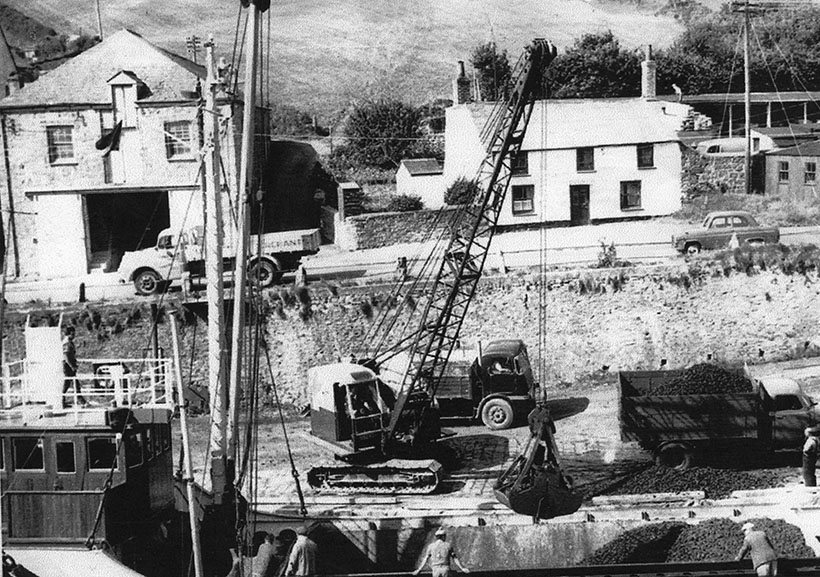
Unloading coal or coke at Charlestown. A 22RB with a clam-shell grab, is seen loading a Bedford TJ Type tipper fitted with greedy boards, while a rare Cornish product, in the form of a Rowe Hillmaster, awaits its turn.

The western end of the old Pinnock rail tunnel, from Par to Fowey, features a plethora of road signs. The single-lane tunnel is traffic light-controlled. Note the giant extractor fan outlets. David was just about to go through as a passenger in an Imerys Land Rover, in February 2012.
For a money-saving subscription to Vintage Roadscene magazine, simply click here




